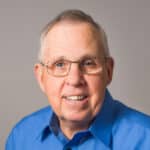Agawam High School teachers Nikali Benkert and Mary Lynn Hunter give a short presentation to the School Committee on May 14 about a team of educators working to reimagine teaching and learning at the school.
Reminder Publishing photo by Mike Lydick
AGAWAM — A team of educators has spent nearly a year working on an initiative to reimagine what teaching and learning could look like at Agawam High School.
The work has taken them on site visits across the continent, funded by a $100,000 planning grant from the Barr Foundation, a Boston-based philanthropy. The money has paid for travel expenses, professional development opportunities and reimbursement to educators for hours spent at meetings and other activities outside of school.
They crunched data, shadowed students during the school day, visited other high schools across the region and the country, and have had hundreds of conversations about teaching and learning.

Reminder Publishing submitted photo
Mary Lynn Hunter, a literacy coach, and Nikali Benkert, a calculus teacher and math instructional coach, made a short presentation about the team’s work at the School Committee’s May 14 meeting.
“We began this journey because we all had something in common, something that you all also have in common: We want the best for the young people of Agawam,” said Hunter. “When we began, all we knew was that we would be reimagining high school.”
Hunter said that after returning from the COVID-19 lockdowns, a change in instruction was something at the forefront of teachers’ minds.
“We entered into this experience with no expectations, just open minds,” she said.
During the first phase of their work, the team collected instruction and school culture data about AHS. This included state testing results compiled by the state Department of Elementary and Secondary Education, surveys of staff, students and parents, as well as focus groups run by independent consultants.
In one of the focus groups, a teacher said “students are not being challenged and engaged in ways what we are hoping for, and there is a disconnect between what students need and how hard teachers/administrators are working.” A 10th grader wrote in the school’s YouthTruth Survey that “some of the classes just don’t have enough challenging work” for students.
Another component of this phase was shadowing students. More than 16 AHS teachers followed students from class to class for an entire school day — even going to vocational classes at Career TEC in West Springfield and sitting with students at lunch. Teachers involved in the shadowing then completed a survey about their experience.
Hunter said that one AHS student told a teacher that she was bored in class.
“She paid attention the entire time, but did not seem to be actively engaged or enjoying it,” said the teacher. According to Hunter, this is a “representative theme” from teachers who participated in the shadowing process.
Benkert said the first phase was “definitely eye-opening” to him and sometimes difficult to understand and look at.
“Part of our work was trying to make sense of all of this data, since we were tasked with finding common themes in all of the data collected,” he said.
At a three-day workshop, team members let go of their own biases to consider the root causes of what they were seeing in the data. They distilled the data down to three focus areas: school culture, personalized learning experiences, and defining rigor.
In January, the Barr Foundation sponsored and organized an inspirational tour of several schools in California and Arizona. The purpose was to help guide team members as they embarked on facilitating later school visits of their own choosing.
“This was an incredible opportunity to visit schools across the country. All of these things helped us to begin thinking about places we’d like to visit on our own as we began scheduling school visits,” said Hunter.
Benkert said that after the inspirational tour, the team went through a process of organizing several local, regional and national school visits, using the three focus areas to select the schools to visit. At this point in the process, he said, the team began casting a wider net and involved more than 32 AHS teachers in these visits,
“Some of the student work samples from those schools, the amount of information and the opportunity we had to have conversations was just absolutely incredible, eye-opening and a wonderful experience,” said Benkert.
The Barr Foundation also helped the team create an ideation map that was used when it met again March to begin thinking about future steps for AHS.
“We had many intense conversations about the future of teaching and learning at our school and how we might get there,” said Benkert.
Hunter said the process has been a “truly incredible experience and an amazing opportunity” for AHS teachers and the Agawam community. “Over the course of this past year, this grant has allowed us to involve teachers and staff in unique professional development experiences and has fueled hundreds of conversations about teaching and learning and the future of the high school.”
In addition to Benkert and Hunter, other members of the team include Principal Jim Blain, School Superintendent Sheila Hoffman, Assistant Principal Tim Karetka, Spanish teacher Jen McDonald, business teacher Ryan Dunphy and English teacher Scott Cassidy.



